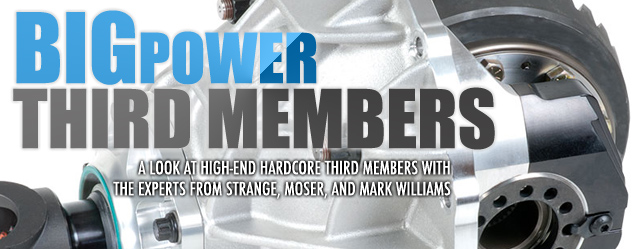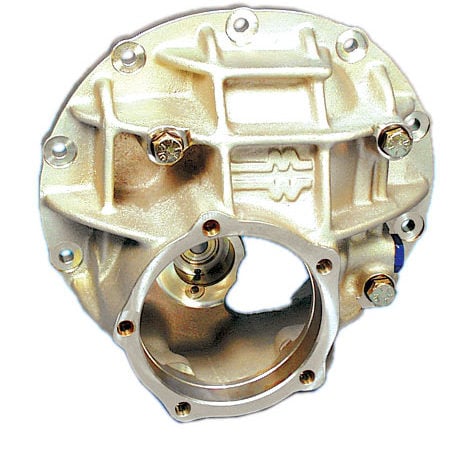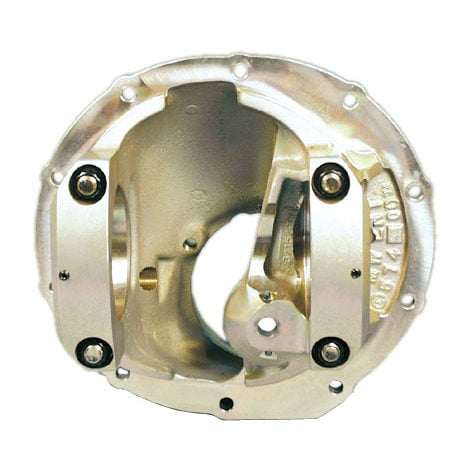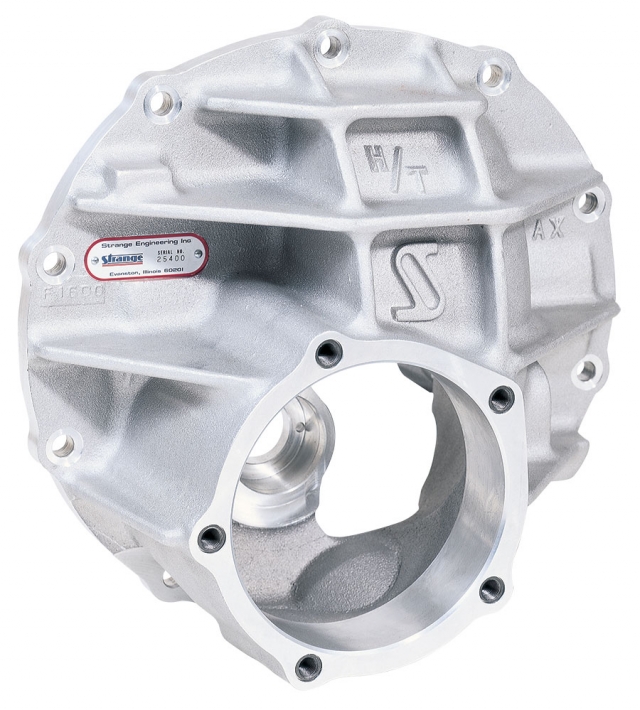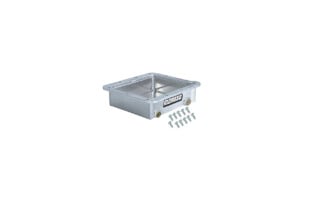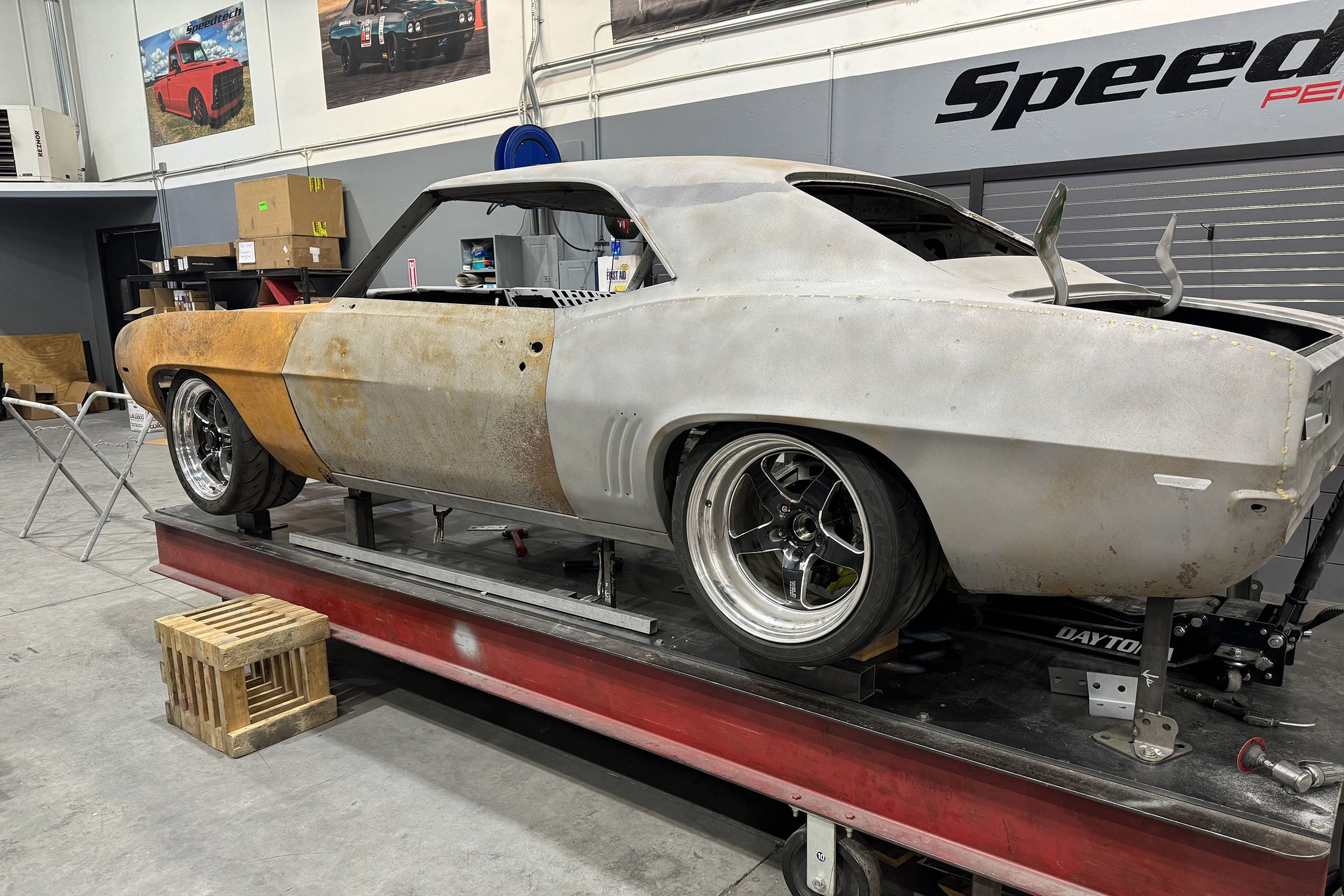There’s no specific formula for it, but the drivetrain and driveline of a vehicle work in virtual tandem: more horsepower and torque requires increasingly beefier components, from the transmission to the driveshaft to the rear end housing and the axles. And the heart of the driveline package in a nine inch-style rear end on a race car lies in the center section, also known as the third member, where the power is applied from the driveshaft rotation directly to the axles. So naturally, it’s not an area of the car worth skimping on, unless of course, you want to be “that guy” with parts and fluid all over the racing surface.
In this tech piece, we’re going to take a look at the various components that comprise a center section assembly and how some of the leading manufacturers beef them up to handle the rigors of hundreds and even thousands of horsepower — from their selection of materials to the overall structure of the parts. As you read on, you’ll hear from three of the top driveline companies in the racing industry, including J.C. Cascio of Strange Engineering, Jeff Anderson at Moser Engineering, and Mark Williams of Mark Williams Enterprises.
Low End Versus The High End
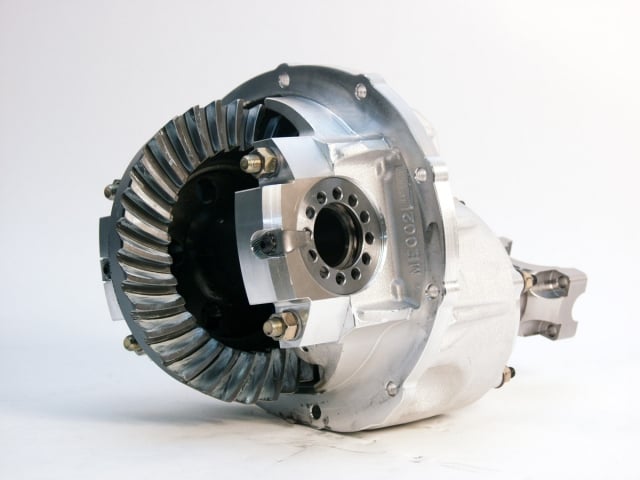
Aftermarket racing third members deliver all of the attributes needed to handle big power and the hard launches of a race car. Aluminum and nodular steel construction, through-bolt designs, a spool, Pro Gears, beefier pinion and tail bearing support, and much more are all part of making these center sections handle big power, a lot of weight, and good traction.
As with most race car components, the biggest differences between center section assemblies for lower horsepower versus higher horsepower lies in the axle spline count, the material that the case is constructed from, the ring gear composition, and u-joint or coupler size.
“When it comes to spline count and cases, there are many key areas that separate the factory cases from the high end cases used in drag racing,” says Moser’s Anderson. “The case materials and cap sizes play the biggest part, with the key to this being the carrier bearings. The outside diameter of the carrier bearing will determine what spline axle and carrier combination can be used with the case.”
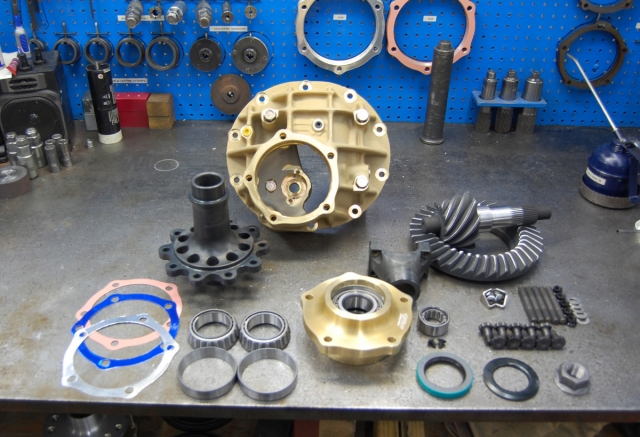
The components of a Mark Williams center section, including the case itself, the spool and ring gear, pinion and pinion support, and bearings.
According to Anderson, a case carrying a 3.062-inch bearing size will typically dictate a 28-33 spline carrier and axle combination be used, whereas the larger 3.250-inch or 3.812-inch bearing carriers will allow for the larger 35 and 40 spline axles and spools that are often used on high horsepower race cars.
Another consideration are the pinion yokes, which often requires a jump up in u-joint size to handle the higher horsepower levels. Such a move would typically require going from a 1310 to a much larger 1350 style u-joint.
But how do you determine these things for your specific application?
Explains Anderson, “When assembling your center section it is always best to first determine the end use. Is this an extreme application that will need 33, 35 or possibly 40 spline axles? Are we going to need to use a competition gear that can handle the shock loads of a high RPM launch without fracturing teeth off the ring gear? Do we need a street-able gear that can handle daily street driving that a softer “Pro” gear can’t handle? How are we going to get the power to the center section? Is it using a pinion coupler or 1350 style u-joint yoke or will a standard 1310 series yoke be enough?
For this reason it’s always best to speak with the experts to help you make the right choice. Of course it doesn’t hurt to do some homework, as well.
The Weak Links
We’ve already identified some areas where manufacturers beef things up, but what are considered the weak links on a factory center section? Mark Williams begins by telling us, “The first weak link is the main caps on a stock case. They’re just a cast iron material, and they’ll break the caps right off of them. When Ford made the nodular case in the 70’s, they just used the cast iron caps and that was a pretty weak case. But they weren’t any good unless you replaced those caps with steel versions.”
For this reason, main caps on a big power third member will commonly be double the thickness or size of more modest pieces to control deflection flex and deflection (the degree to which a structural element is displaced under a load).
Because the cases are typically made of a cast iron, there isn’t very much material in the tail bearing area, making them prone to fail. – J.C. Cascio
For big power, as in 1,500 horsepower and on up, an aftermarket through-bolt case is generally recommended by the manufacturers. “Any derivative of a stock case just won’t hold up to that kind of power,” says Williams. Also according to Williams, a strong street car might get away with a nodular case with what’s known as a Daytona pinion support and aftermarket caps.
Strange’s Cascio points to the tail bearing of an OEM case as one of the weakest points. “Because the cases are typically made of a cast iron, there isn’t very much material in the tail bearing area, making them prone to fail.” As well, the ring and pinion is an obvious factor, specifically in street/strip applications, because a street gear has to be used to run on the street, but they’re harder and tend to wear over longer periods of time, as Cascio pointed out. Thus, due to their nature, they’re more brittle and can crack and chip in high-horse applications.
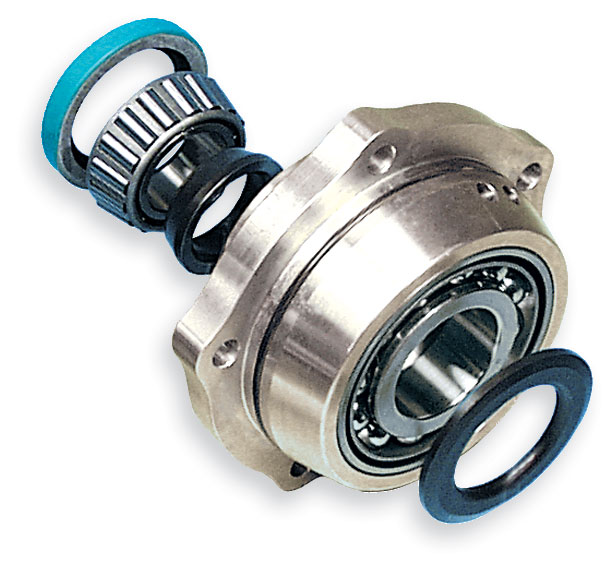
Like the cases themselves, strong pinion supports are a requirement in a power-hungry third member assembly. This particular pinion support from Mark Williams is an angular contact ball bearing support for 35-spline, 9-inch housings.
The big dividing line between lower and higher end center sections isn’t necessarily in the horsepower, but in the available traction, the driving style, and the vehicle weight. Slicks and street tires are going to hit the rear end much differently, and a 600-horse footbrake car and a 1,500-horse 3,000 lb. car dumping the clutch at 7,000 rpm are night and day apart in what they demand from a center section, as you can imagine.
Says Williams, “If you have anything quicker than 12 seconds, you really need to have the aftermarket case and pinion support. As you go numerically higher in the gear ratio, say a 3.73 or 4.10 and you want 5.14’s in it for the track, that becomes an issue because it starts loading the pinion gear harder. The extra traction then from the dragstrip just really puts the load on everything.”
Says Anderson, “When designing an aftermarket case, a lot of time is spent focusing on the next weak link. As you increase the size of the axle or the pinion you transfer the weakest link to another area in the driveline. Every square inch of the case can affect the next. It is similar to building a bridge. Every part works together to build a unifying structure that when assembled creates a part that together is stronger than the sum of the individual parts.”
Case Design
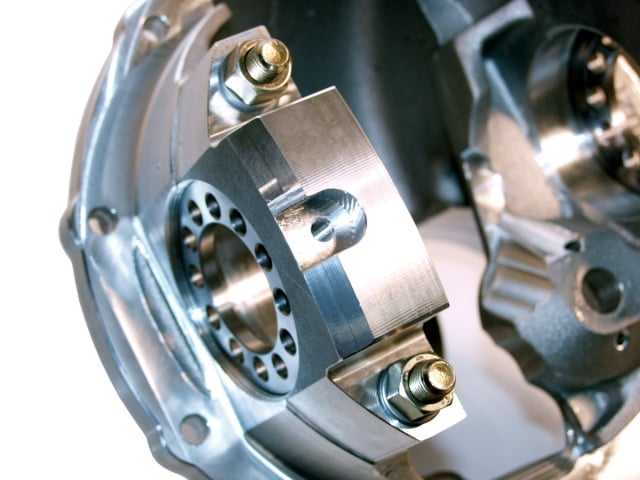
The through-bolt design is one of the great innovations in center section technology. In this type of case, used by virtually all drag racers, the rear caps are bolted straight through to the front of the case, creating a strong bond under the harsh forces that a center section endures.
When you look at the center section under a car (or in a catalog), you’ll often see ribbing as part of the physical structure of the case, and this is done entirely for rigidity and support of the torque and the load that the case itself is under going down the race track. This is done in particular to support the carrier bearing and pinion support areas, and most generally, lower end factory cases lack in this area because, to be perfectly honest, they can.
As each of the companies we spoke with explained, the main caps on an aftermarket case are often twice the thickness of a standard issue or factory part, and are generally made from stronger materials to help fight deflection and flex. Aftermarket pinions will also commonly have larger bearing selections to keep the pinion held in place. According to Anderson, Pro gear setups will often require a 10-hole support rather than a typical 5-hole for extra support to handle the shock loads. In their center sections, Mark Williams used 7/16-inch pinion studs to help with the stresses of big power loads.
The ribbing of the cases plays a role in its structural support, as does the material itself and the thickness of said material in key areas. Shown here is a front and back view of Mark Williams' 9-inch, through-bolt, 3.812-inch bore case that displays the ribbing and structure of the through-bolt design.
The most common case design, used in almost any racing application and certainly those for heavy or high horsepower cars, is the through-bolt case. In such a case, the bolts holding the caps in place run from the front side of the case clear through to the backside of the caps, creating the strongest of connections. As Anderson shared with us, because of the lesser (but still more than adequate) strength of aluminum, the through-bolt design is essentially a requirement, and Moser believes so strongly in this that they won’t even sell an aluminum case that isn’t through-bolt.
Axles, Splines, And Spools
In a dedicated drag racing application, a spool is a virtual must. While differentials work well for light duty track work, they’re just not inclined to hardcore drag racing, as the manufacturers explained to us. But beyond that, moving to a larger spline is one of the first steps that racers undertake.
A 31-spline setup is considered a stock spline, but in order to take advantage of the spool, and to cover the minimum spline count that almost any manufacturer will recommend for racing, you’ll need a 35-spline. While some manufacturers will admit that a 31-spline can work in a perfect setting, it’s situations where you get out of shape and place an excessive load on one side of the car that you can snap an axle shaft.
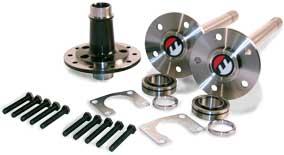
The lowest spline count that any of the manufacturers we spoke with suggested was 35-spline. This is also the minimum spline count hat’s compatible with a spool, so if you’re an aspiring drag racers, this is your route.
As a buying tip, in many cases the price difference between a 35 and 40 spline is negligible if any at all, so unless you’re stuck with a 35-spline based on other factors, there’s no reason NOT to go with the larger count axle and spool for added peace of mind and compatibility down the road.
So What About Materials?
Materials used to manufacture the case itself range from your more standard (and heavier) irons up to lightweight grades of aluminum. Like anything, there are tradeoffs between weight and strength. In most cases, drag racers would prefer the weight savings over the strength, especially given the fact that aluminum cases and rear ends have proven capable of handling virtually anything.
It’s this weight versus strength trade-off between aluminum and nodular iron that really determines which direction one goes. As the manufacturers explained, aluminum, albeit lighter than nodular iron, exhibits deflection characteristics. To that effect, nodular iron will provide longer gear life and less deflection. Aluminum is typically use in weight-conscious classes, but in those categories where that is less of an issue, nodular iron provides a stronger, more affordable option.
Sidebar title
Aluminum cases across the spectrum are typically made from A356 or A-206 aluminum alloy, or 206-T4 aluminum, among some other grades of material. the caps are commonly reproduced from steel with 2014, 6061, or 7075 aluminum. According to the manufacturers we spoke with, aluminum is very suitable for many applications, and it’s the most popular choice because it’s lightweight, but it’s not the strongest choice. That honor goes to Nodular Steel/Iron, and for heavy cars or those leaving with a lot of starting line RPM, Nodular is often considered the better choice, with the tradeoff being a little more weight.
Using Mark Williams as an example, their range begins with an entry level nodular iron center section. “It’s basically the same cross section with some improvements as the Ford nodular piece that they made in the 1970’s for the Ford Thunderbolts. We’ve just made changes throughout to fix the weak links,” says Williams. From there, you move up to a lightweight aluminum version that carries the same cross section as the nodular case, but with a 70,000 lb., aircraft grade aluminum material that comes in lighter on the scales. This makes it quite suitable for entry level drag racing applications when weight is a concern.
Like Mark Williams, Strange Engineering and Moser also begin with the heavier but strong-as-an-ox nodular steel/iron case, working up to through-bolt aluminum for the more serious racers. In their Pro Iron case, Strange uses a premium nodular material known as D4512 and 2014 T-6 aluminum to manufacture the caps.
Explains Williams, “The nodular iron is rated at a tensile strength 80,000 lbs., whereas the aluminum is 70,000. There’s not a great deal of difference there, but of course iron, compared to aluminum and by its nature, is stiffer.”
To sum up the equal parts of design and material, Cascio states, “It’s a combination of the material and the design of the case. Obviously materials is one aspect, but the ribbing, the cap design and things like that definitely play a large role.”
What About Gears, Pinions, And Other Components?
For powerful racing applications, Pro Gears are the obvious choice, thanks to their material makeup and design. Standard street/OEM gears are made from a material such as 8620 and heat treated for longevity on the road, but such a design makes them less applicable to high shock loads on the dragstrip. Pro Gears, on the other hand, are crafted from 9310 and other exotic steel materials.
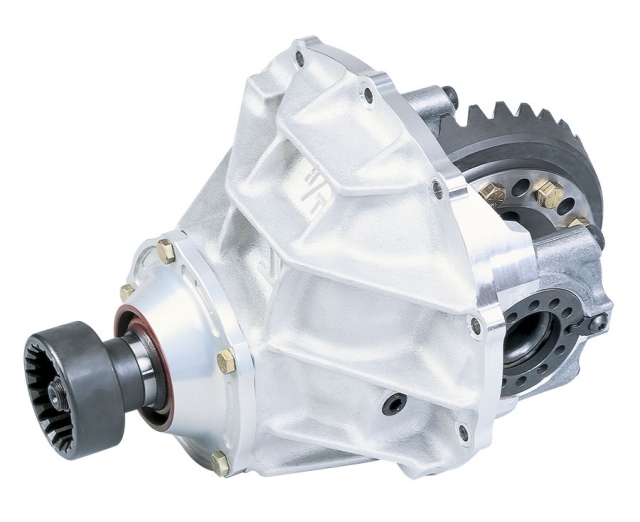
Racing applications will generally use Pro Gears, which are made from a “softer” 9310 material that allows the gears to handle the shock load on the starting line better than street gears.
Says Cascio, “The Pro Gears are much softer, so they absorb the shock off the starting line better, which makes them great for drag racing. But because they’re soft, if you run them for a long period of time, the gear just wears itself out.”
Years and years of development have gone into refining center section design, material selection, and component construction, to produce assemblies that will handle virtually anything you can throw at them — if you build it right the first time and don’t skimp based on the weight, use, and performance capability of your vehicle.
“You can have the strongest case in the world, but if you have weak components inside, that’s what’s going to fail,” said Cascio in closing. “So the whole assembly needs to be built accordingly. Because you have a specific case doesn’t mean the gears going to hold up or because you have a specific gear, the case isn’t going to fail. You need to have the right combination of parts to make it work.”



